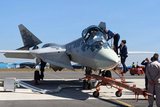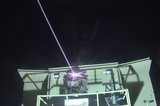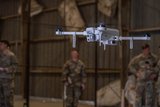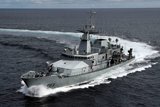F-35A drops inert B61-12 nuclear bomb in first of new test series
Honeywell subsidiary Sandia National Laboratories announced on 23 November that it has successfully conducted a mock B61-12 weapons drop from a US Air Force F-35A Lightning II in a flight test that saw the fighter jet launch the bomb from an internal bay faster than the speed of sound.
The demonstration took place on 25 August at the company’s Tonopah Test Range, Nevada, and saw a modified B61-12 with a ‘mock nuclear explosive package’ launched from the F-35A from around 10,500ft, according to Steven Samuels, a manager of Sandia’s B61-12 Systems Team.
Between release and ground impact the weapon was
Already have an account? Log in
Want to keep reading this article?
More from Defence Notes
-
![What will next-gen counter-UAS capabilities for the US look like?]()
What will next-gen counter-UAS capabilities for the US look like?
Future US counter-uncrewed aerial system solutions are likely to require a flexible, multi-layered approach to tackle a broad spectrum of new threats as they emerge.
-
![Elbit Systems awarded $2.3 billion contract as results soar]()
Elbit Systems awarded $2.3 billion contract as results soar
The company’s order backlog as of 30 September totalled $25.2 billion and more than a third of this is scheduled to be fulfilled before the end of 2026.
-
![US military foresees growing use of 3D printing]()
US military foresees growing use of 3D printing
Advanced manufacturing has evolved to meet military requirements and now supports multiple US critical assets, including Arleigh Burke-class destroyers, F-18, F-22, F-35, Bradley, HMMWV and Patriot.
-
![Irish Naval Service expands as the country looks to defence during EU presidency]()
Irish Naval Service expands as the country looks to defence during EU presidency
The Irish Naval Service has struggled to maintain capability, particularly in the face of lucrative private sector offers luring away personnel.
























